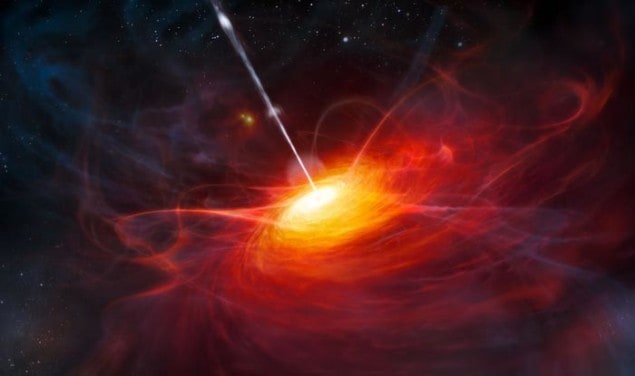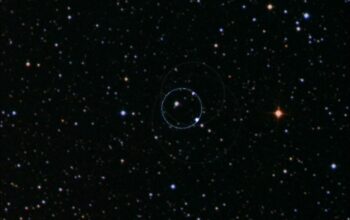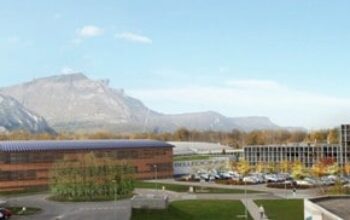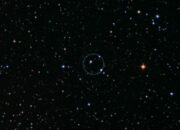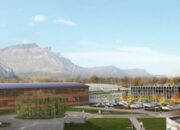The exploration of ancient gas clouds serves as a pivotal window into the nascent epoch of the universe, particularly during its first billion years. As astronomers investigate these primordial gas reservoirs, they unravel essential insights regarding cosmic chemistry and the formation of celestial structures. This narrative will detail the significance of ancient gas clouds, their implications for understanding the early universe, and the methodologies employed in contemporary astrophysics to analyze them.
To fully grasp the importance of ancient gas clouds, one must first consider the cosmological framework that shaped their formation. Approximately 13.8 billion years ago, the universe emerged from an extremely hot and dense state, known as the Big Bang. This cataclysmic event triggered a sequence of cooling and expansion, allowing matter to aggregate into primordial elements such as hydrogen and helium. It is these fundamental elements that comprise the ancient gas clouds pivotal to our comprehension of the universe’s infancy.
These gas clouds, often categorized as “cosmic webs,” play an integral role in the formation of the first stars and galaxies. The gravitational attraction between clumps of gas results in the creation of increasingly denser regions, which ultimately collapse to form stars. The interplay of gravity and thermodynamics in these environments leads to nuclear fusion, igniting the first generation of stars known as Population III stars. These stars not only illuminate the cosmos but also synthesize heavier elements through stellar nucleosynthesis, enriching the interstellar medium with the diversity of elements necessary for subsequent generations of stellar and planetary formations.
Moreover, the study of ancient gas clouds elucidates the processes behind cosmic reionization. Following their formation, the first stars emitted vast quantities of ultraviolet radiation, which interacted with surrounding hydrogen gas. This interaction led to the ionization of hydrogen, effectively clearing the universe of the “cosmic fog” that obscured visibility during the so-called dark ages. Understanding the timeline and dynamics of reionization is critical for comprehending the evolution of the cosmic structure.
The methodologies employed to discern the properties of ancient gas clouds are both intricate and varied. One prevalent technique is the analysis of absorption spectra from distant quasars. When light from a quasar traverses these gas clouds, certain wavelengths are absorbed, offering astronomers critical information regarding the chemical composition, density, and temperature of the gas. This approach allows for the identification of neutral hydrogen as well as the presence of heavier elements, indicative of past stellar activity.
Another prominent technique is the utilization of telescope arrays, such as the Atacama Large Millimeter/submillimeter Array (ALMA), that observe the millimeter and submillimeter wavelengths emitted by these ancient clouds. This observational strategy can provide direct insight into the physical conditions prevailing within gas clouds, including temperature fluctuations and density gradients. Such detailed observations enhance our understanding of the dynamics that governed the early universe.
Key discoveries related to ancient gas clouds often stem from the insights gained through these observation techniques. For instance, astronomers have identified primordial gas clouds associated with the first galaxies, often referred to as “Lyman-alpha blobs.” These luminous regions are characterized by their emission of Lyman-alpha radiation, signifying the presence of hydrogen. Their enormous sizes and masses hint at the early configurations of galaxies, thus enriching our understanding of large-scale structure formation.
Additionally, the discovery of highly redshifted quasars has provided a means to observe gas clouds at unprecedented distances, corresponding to a time when the universe was less than a billion years old. Such investigations have revealed unique chemical signatures and conditions that suggest the rapid consolidation of matter during this formative period. The analysis of metallicity—essentially the abundance of elements heavier than hydrogen and helium—has also shed light on the rates of star formation and the efficiency of feedback processes in these early galaxies.
The implications of studying ancient gas clouds extend beyond mere curiosity regarding the universe’s origins. They offer significant insights into the fundamental processes that govern cosmic evolution, aiding in the refinement of cosmological models. Understanding the interplay of dark matter, baryonic matter, and radiation during the early universe is essential for advancing theoretical physics and codeveloping a harmonious narrative of cosmic history.
Furthermore, the investigation of ancient gas clouds resonates with broader questions in modern astrophysics, including the search for habitable environments and the conditions conducive to the emergence of life. In uncovering the above-mentioned elemental abundances and the complexities of molecular interactions within these clouds, researchers come closer to identifying the prerequisites for planetary systems capable of sustaining life as we understand it.
As astronomical techniques and technologies continue to advance, the revelations from ancient gas clouds promise to yield an ever-deepening understanding of the first billion years of the universe. The confluence of observational astronomy with theoretical models holds the potential to illuminate the enigmatic chapters of cosmic history that remain obscured in darkness. Harvesting knowledge from these ancient gas clouds is not merely a quest for information but a profound inquiry into our place within the vast, intricate tapestry of the cosmos.
